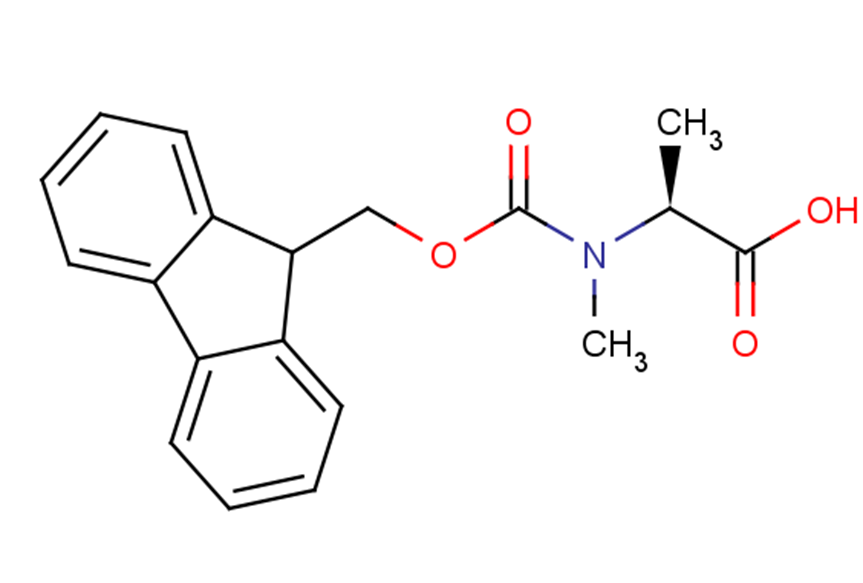
Fmoc-N-Me-Ala-OH
CAS No. 84000-07-7
Fmoc-N-Me-Ala-OH( —— )
Catalog No. M22338 CAS No. 84000-07-7
Fmoc-N-Me-Ala-OH, an N-Fmoc-N-methyl amino acid, is available for the peptide-coupling reaction.
Purity : >98% (HPLC)
 COA
COA
 Datasheet
Datasheet
 HNMR
HNMR
 HPLC
HPLC
 MSDS
MSDS
 Handing Instructions
Handing Instructions
| Size | Price / USD | Stock | Quantity |
| 100MG | 37 | In Stock |


|
| 200MG | Get Quote | In Stock |


|
| 500MG | Get Quote | In Stock |


|
| 1G | Get Quote | In Stock |


|
Biological Information
-
Product NameFmoc-N-Me-Ala-OH
-
NoteResearch use only, not for human use.
-
Brief DescriptionFmoc-N-Me-Ala-OH, an N-Fmoc-N-methyl amino acid, is available for the peptide-coupling reaction.
-
DescriptionFmoc-N-Me-Ala-OH, an N-Fmoc-N-methyl amino acid, is available for the peptide-coupling reaction.
-
In Vitro——
-
In Vivo——
-
Synonyms——
-
PathwayOthers
-
TargetOther Targets
-
RecptorOthers
-
Research Area——
-
Indication——
Chemical Information
-
CAS Number84000-07-7
-
Formula Weight325.36
-
Molecular FormulaC19H19NO4
-
Purity>98% (HPLC)
-
SolubilityIn Vitro:?DMSO : 100 mg/mL (307.35 mM)
-
SMILES——
-
Chemical Name——
Shipping & Storage Information
-
Storage(-20℃)
-
ShippingWith Ice Pack
-
Stability≥ 2 years
Reference
1.Harris KS, et al. Rapid optimization of a peptide inhibitor of malaria parasite invasion by comprehensive N-methyl scanning. J Biol Chem. 2009 Apr 3;284(14):9361-71.
molnova catalog



related products
-
Sodium zirconium cyc...
Sodium zirconium cyclosilicate (UXSi-9) is a novel selective cation exchanger and a K+ binder that can be used to remove excess K+ from the body and can be used in the treatment of hyperkalemia.
-
Yuankanin
Yuankanin, a natural compound found in thyme leaves, Daphne gnidium and Daphne feddei, is a genkwanin-5-bioside with anthelmintic activity.
-
Borapetoside B
Borapetoside B is a natural product of Tinospora, Menispermaceae. Borapetoside B can be used as a reference standard.



 Cart
Cart
 sales@molnova.com
sales@molnova.com


